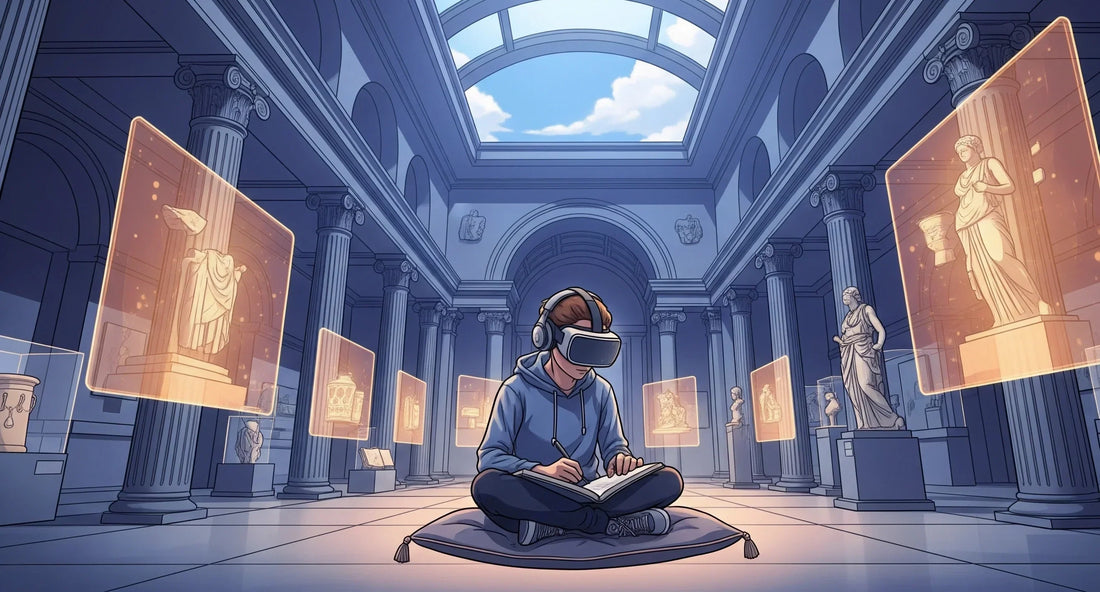
VR Museum Footsteps: Marble Echo Sound for Study Focus
Share
The growing shortage of quiet study spaces has students seeking alternative acoustic environments that support deep learning. Virtual reality museum experiences offer a surprising solution - the specific combination of marble footstep echoes, hushed voices, and distant HVAC systems creates an ideal cognitive environment for sustained academic focus.
Museum acoustics work through what neuroscientists call "stochastic resonance" - random background variations that actually improve cognitive vigilance and attention. The unpredictable timing of distant footsteps, the irregular murmur of hushed conversations, and the subtle variations in air circulation create just enough acoustic complexity to keep your attention systems alert without overwhelming conscious processing.
The psychological effect of museum environments extends beyond pure acoustics. These spaces trigger associations with learning, contemplation, and intellectual engagement that prime your brain for studious behavior. Even virtual museum experiences activate these mental schemas, helping shift your consciousness from casual to academic mode.
The Architecture of Focus
Museum acoustic design creates specific conditions that optimize different types of learning:
Marble and Stone Reverb - The extended echo tail of footsteps on hard museum floors creates a sense of spaciousness that prevents claustrophobic mental states while providing consistent acoustic anchoring. The natural reverb patterns help regulate attention by providing predictable but not repetitive auditory structure.
Distant Social Presence - The awareness of other people engaged in quiet, contemplative activities creates what psychologists call "social facilitation" - your performance improves when you sense others doing similar focused work, even if you're not directly interacting.
Environmental White Noise - Modern museums require sophisticated climate control that generates consistent, broadband background sound. This technical white noise effectively masks distracting environmental sounds while remaining unobtrusive to conscious awareness.
Acoustic Isolation - Museum acoustics naturally separate you from external urban noise, traffic, and other environmental stressors that fragment attention. The combination of heavy construction and sound-absorbing materials creates islands of cognitive calm.
Optimizing Virtual Study Spaces
Neutral studio headphones preserve the subtle acoustic details that make museum environments effective for focus - the precise timing of footstep echoes, the spatial characteristics of whispered conversations, and the full frequency spectrum of architectural ambience. Enhanced or colored audio reproduction can destroy the naturalistic balance essential for cognitive benefits.
360-degree museum audio tracks work best when they include natural movement patterns - visitors arriving and departing, guards making rounds, staff conducting maintenance. These realistic activity cycles provide variety that prevents habituation while maintaining the contemplative atmosphere essential for deep study.
Volume calibration requires careful attention to realism. Museum ASMR should match the actual volume levels you'd experience in quality cultural institutions - quiet enough for concentrated thinking but with enough presence to provide environmental structure and social connection cues.
The beauty of virtual museum study environments lies in their accessibility - you can access world-class contemplative spaces regardless of geographic location or institutional access. With quality neutral headphones and carefully curated museum audio, any study location can be transformed into a scholarly sanctuary that combines the best of traditional academic environments with modern technological convenience.
For students ready to elevate their study practice beyond typical café or library options, an art-inspired audio collection provides access to some of humanity's most thoughtfully designed contemplative spaces, available whenever deep learning demands the perfect acoustic environment.
